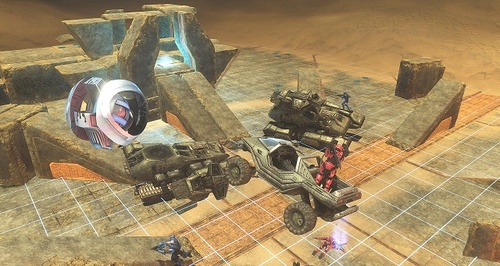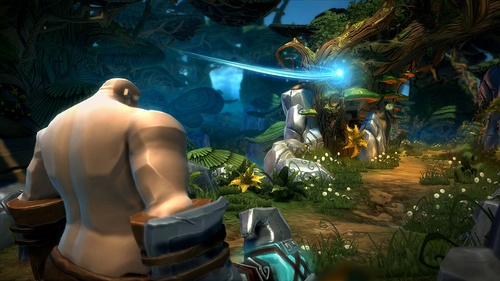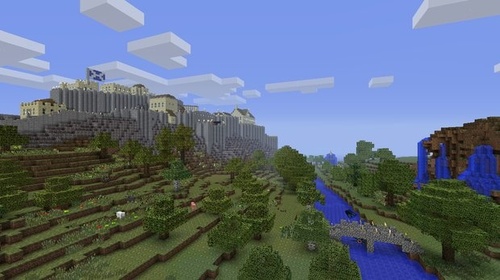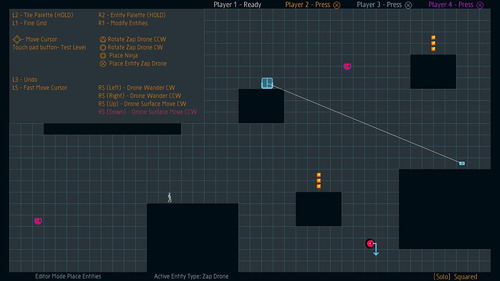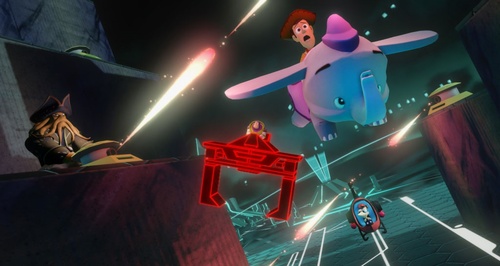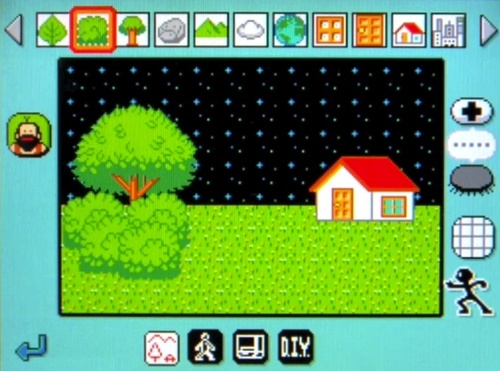Super Mario Maker will likely engender an entire generation of level and game designers. Building your own Super Mario levels seems like a no-brainer of an idea, but it’s actually building off a long line of games that have tried to bring game design to the average person. Creating games can be as fun as playing them, and fans of Mario Maker, should they ever get bored of building levels made of nothing but Bullet Bills, have several other games that make tinkering around with design accessible and easy to sink their teeth into. Here are some of our favorites.
LittleBigPlanet Series
LittleBigPlanet was, in many ways, the first “big” level creation game on consoles. Sure, you could muck around with building whole campaigns in RPG Maker long before Sackboy came around, but in its time, LittleBigPlanet combined two distinct improvements: it expanded the breadth of what you could do with simple objects and interfaces, and it allowed users to share their creations with others. As the series iterated, you could create entirely new kinds of games, and you didn’t have to tinker with AI loops and switches all that much. LittleBigPlanet made creating levels accessible in a way no other game really had until then, and it was an incredible feat.
Halo 3
Halo 3’s forge wasn’t the most complex or robust tool out there, but it did exactly what it needed to: allow players to make crazy ramps that launched Warthogs into each other at high speeds. You could also change various weapon spawn points, timers, and place items anywhere on Bungie’s pre-made levels. The mode was only intended to create level variants and not entirely new modes or games, but players became really good at using its limited resources to make some big changes and create entirely new maps. Halo: Reach’s Forge mode had a better of suite of tools overall, but the original Forge mode was one of the best examples of a feature appearing at exactly the right place at the right time, pushing all-nighters with Halo 3 past their natural breaking point.
Project Spark
It doesn’t inspire much adoration in hindsight (I had to think about games with creation suites for a while before I remembered this came out), but Project Spark was kind of a brave move for Microsoft. Sure, Minecraft had already made a good case for creation games without extensive single-player elements to back them, but for them to dedicate a relatively large budget to it, and then make it free-to-play, gave the game the right combination of accessibility and potency. It was far from perfect, but it did give you one of the simplest ways of creating a game from the ground up, with no PC required.
Minecraft
For the longest time, I never would have thought to put this game on this list. There was no way a game as profound and varied as Minecraft could ever fit, let alone work, on a console. And in a way, it doesn’t: the worlds in the Xbox versions of the game are finite and the interface is a bit finicky. However, Mojang tapped into one of the most key aspects of its game—its intrinsic friendliness—and added local multiplayer. This feature is crucial, and differentiates it from the PC version in a way that makes it its own. Playing on the couch with a friend, sibling or child is a much different experience than building blocky masterpieces hunched over your computer by yourself, and the two are so different that the console versions of Minecraft justified themselves on that alone.
N++
N++ taught me a lot of things. For one, that throwing yourself at levels for hours can be relaxing, not frustrating, when you think about the experience the right way. Secondly, it taught me that making a good level isn’t easy. Every level you make in N++ is bound by the same restrictions its developers had, which means both you and them also have the same potential. My levels were not as good as the premade ones, unfortunately. But it did show me that several people can take a simple toolset and essentially do whatever it is they please with it, which meant I had an endless number of fun levels that ranged from those impossible to complete to ones that literally play themselves. And all it takes for this to happen are the right tools.
Disney Infinity
Disney Infinity expands on the promise of the Toy Story 3 game by throwing every Disney property into the toy box. Star Wars, Marvel, Pixar and Disney are all fair game as Infinity lets you make your own worlds with various toys, characters and settings from all of these universes. Don’t underestimate the power of beloved characters coming together; it’s kind of amazing to see Mickey Mouse teaming up with Han Solo and Captain America. And you don’t have to put the whole thing away when you’re done, and no one has to trip over it in the middle of the night.
Pushmo Series
Pushmo has long been a devilish game hiding behind an adorable aesthetic. It consists primarily of pulling and pushing blocks around on levels that, when solved, look like simple objects or famous characters from all kinds of places. Despite the high cuteness factor some of these levels can be real bastards. The community-made ones are no exception; you might download a level and think you’ll like it because it looks like Sonic, but what you don’t know is that you could spend an hour figuring out how to climb your way to the top of it and come to hate Sonic’s stupid quills because they make it impossible to progress and you just don’t see a way around them. But the level does look like Sonic. And that counts for something.
WarioWare DIY
Super Mario Maker isn’t Nintendo’s first foray into user-created levels. WarioWare DIY had a very simple premise: what if you could create one of the hundreds of “microgames” in all the other WarioWare games? One of those games’ biggest faults was that you’d eventually get bored of whatever kooky activities developer Intelligent Systems had come up with, no matter how good they were. So why not let players make their own? It was a great idea, and learning some of the basics of game programming was made all the better when you were trying to match the off-kilter nature of the average microgame. It wasn’t the hottest idea commercially (WarioWare as a concept was showing its age by then), but it was the natural evolution for a series so reliant on having a new surprise waiting for you around every corner—the essential component of any game worth making your own levels in.
Suriel Vazquez is a freelance writer who should probably cut a lot of people off at the pass by saying that all the “horde mode” mods he’s played haven’t been very good. He’s written for Paste, Kotaku, Vice and more and you can follow him on Twitter.

